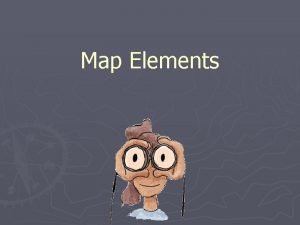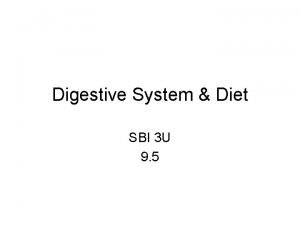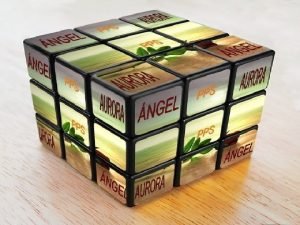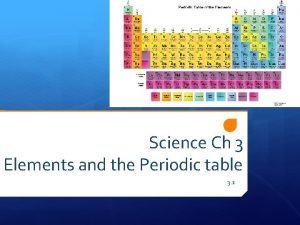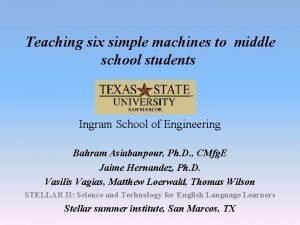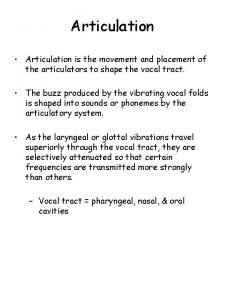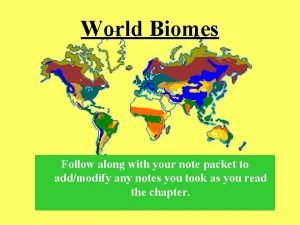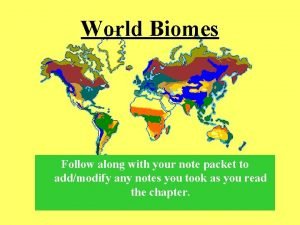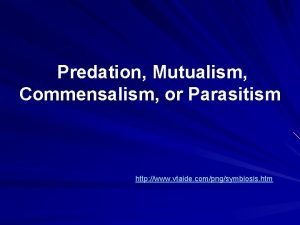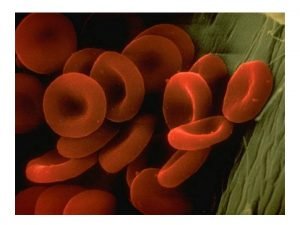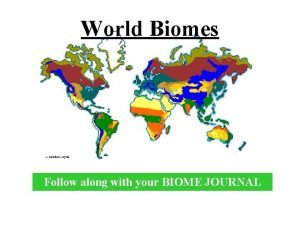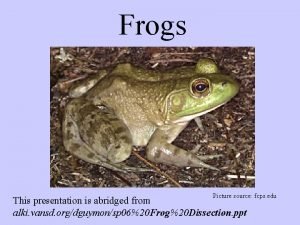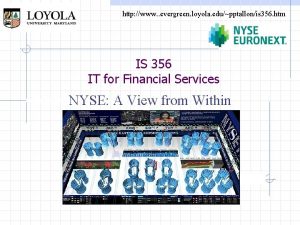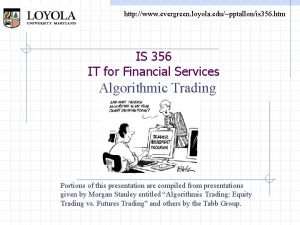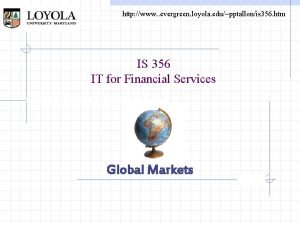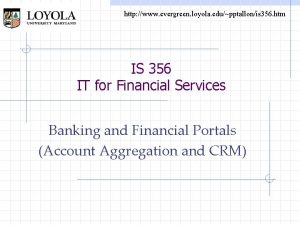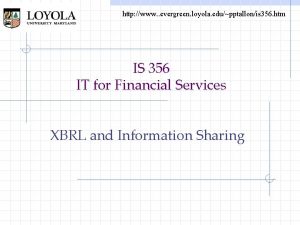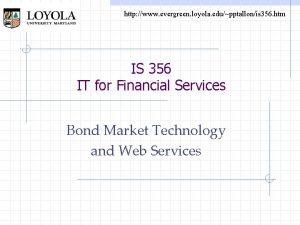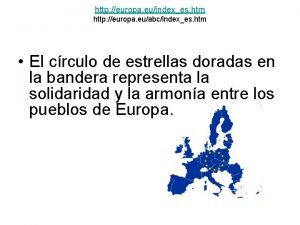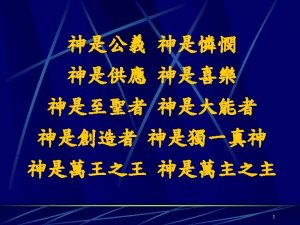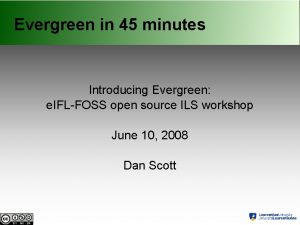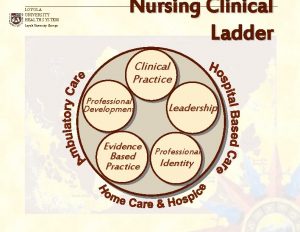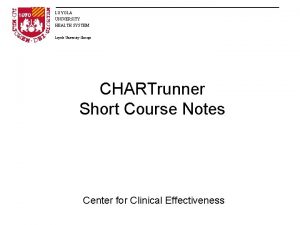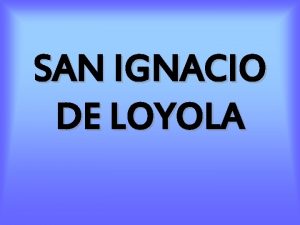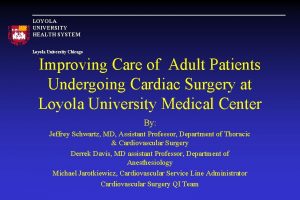http www evergreen loyola edupptallonis 356 htm IS


















- Slides: 18

http: //www. evergreen. loyola. edu/~pptallon/is 356. htm IS 356 IT for Financial Services Foreign Exchange Trading

Background 4 According to the Bank for International Settlements (BIS), the foreign exchange markets trade $4 -5 trillion per day ($5. 2 trillion daily in April 2013: https: //www. bis. org/publ/rpfx 13 fx. pdf) − more than a month of combined NYSE and NASDAQ trades Only 5% of FX traders make money; 90% lose money 4 Some trading is electronic but old technologies persist 4 Characteristics: 4 − − − © Paul Tallon digital good no central clearinghouse (trading and clearing are in sync) no physical trading floor little regulation (central banks often get involved to stop outflows) 24 -hour global trading 30 October 2020 2/18

The Foreign Exchange Market Minimizes foreign exchange risk (unpredictable rate swings) 4 There are different ways to trade currencies 4 − − Spot exchange rates: the day’s rate offered by a dealer/bank Forward exchange rates: – Agreed in advance rates to buy/sell a currency on a future date – Usually quoted 30, 90, 120 days in advance 4 © Paul Tallon Arbitrage: buying low and selling high … given slightly different exchange rate quotes in one location vs. another (e. g. , London vs. Tokyo) 30 October 2020 3/18

Spot Market Characteristics 4 It is the oldest and largest financial market in the world: − − − 4 Primarily an inter-bank or sell-side market, which is the trading of foreign-currency-denominated deposits between large banks. − © Paul Tallon Has no central trading floor where buyers and sellers meet. Is open twenty-four hours a day, except for short gaps on weekends. The spot market is a market for immediate delivery. Global banks account for about two-thirds of the market volume, while foreign exchange brokers and dealers account for approximately 20 percent. 30 October 2020 4/18

A Foreign Exchange Transaction Toshiba Japan receives a dollar denominated payment from Best Buy, which they present to their local Fuji Bank. 4 To exchange the dollar payment for the yen equivalent, Fuji Bank may contact another bank, such as Citigroup, or contact a FX broker. 4 © Paul Tallon 30 October 2020 buy Yen, sell $ 5/18

Arbitrage: Consistency of Rates Arbitrage is the simultaneous buying and selling to profit (as opposed to speculation). 4 You can arbitrage around either spot or future rates but either way, you need to move very fast 4 The ability of market participants to arbitrage guarantees that cross rates will be, in general, consistent. 4 If a cross rate is not consistent, the actions of currency traders (arbitrage) will bring the respective currencies into line very quickly. 4 © Paul Tallon 30 October 2020 6/18

Spatial Arbitrage refers to buying a currency in one market and selling it in another 4 Price differences at a point in time arise from spatial or geographically dispersed markets 4 − − − 4 © Paul Tallon USD/EUR rate quoted in Paris: $1. 2900 = € 1. 00 EUR/USD rate quoted in NY: € 0. 77=$1 but according to the rate posted in Paris, the real rate should be € 0. 77519 (or 1 ÷ 1. 29) NY trader buys € 1 in Paris for $1. 29 and sells € 1 in New York for $1. 2987(makes $0. 0087 or 0. 6744% profit) Due to the low-cost rapid-information nature of the foreign exchange market, these price differences are arbitraged quickly and the rates return to equilibrium 30 October 2020 7/18

Triangular Arbitrage Triangular arbitrage involves a third currency 4 Arbitrage opportunities exist if an observed rate in another market is not consistent with a cross-rate 4 The US dollar is trading for 1. 7936 ($/£) and the South African Rand for 6. 5492 (R/£) in London, while the Rand is trading for 3. 7826 (R/$) in New York. 4 The cross-rate in London is: 4 6. 5492/1. 7936 = 3. 6514 (R/$) Hence, an arbitrage opportunity exists. 4 How do you take advantage of it? 4 © Paul Tallon 30 October 2020 8/18

Example Continued A trader sells £ 1 for $1. 7936 in London. 4 The $1. 7936 would purchase R 6. 7845 in New York. 4 The R 6. 7845 purchases £ 1. 0359 in London. This is a profit of £ 0. 0359 or 3. 59 percent profit on a round trip transaction. 4 1. Sell £ in London profit 3. © Paul Tallon Purchase £ in London 30 October 2020 Purchase R in New York 2. 9/18

Market Structure © Paul Tallon Source: Gallaugher & Melville (2004), CACM 47(8) 30 October 2020 10/18

Issues Phone trading is still an important part of the market. This often paperless approach helped John Rusnak of All. First to hide $691 M in currency trading losses 4 Buy-side banks later developed proprietary systems that directly linked to clients. These systems did not support multiple counterparties which was a problem for trader seeking price competition. 4 This situation led to e. FX portals 4 − − − © Paul Tallon Single-bank sponsored (State St. – FX Connect) Independents – Currenex Bank consortia – FXall, Atriax (closed: Chase, Citibank & DB) 30 October 2020 11/18

Technology Innovation © Paul Tallon Source: Gallaugher & Melville (2004), CACM 47(8) 30 October 2020 12/18

Bought by State Street in January 2007 Currenex To buy € 1, it will cost you $1. 2934 Roundtrip Example: (no clear arbitrage opportunity; $1. 2934 = € 1; € 1 = ¥ 137. 95; ¥ 137. 95 = $1. 2932 there is only a tiny difference) © Paul Tallon 30 October 2020 13/18

Trading (just like equities) © Paul Tallon 30 October 2020 14/18

Up to 200: 1 leverage No fees or commissions © Paul Tallon 30 October 2020 15/18

© Paul Tallon 30 October 2020 16/18

© Paul Tallon 30 October 2020 17/18

For Next Class… 4 Read – © Paul Tallon There will be a 75 minute in-class exam on Oct 16 covering all of the materials we have covered on the NYSE, NASDAQ, ECNS, and international markets. The exam will be open case study packet, open notes, open Moodle, open G: drive, open course website (for access to slides or other course readings), but otherwise closed Internet. 30 October 2020 18/18
 Http //go.hrw.com/atlas/norm htm/world.htm
Http //go.hrw.com/atlas/norm htm/world.htm Http://www.cellsalive.com
Http://www.cellsalive.com Http://www.cellsalive.com
Http://www.cellsalive.com Small intestine enzymes
Small intestine enzymes Http://www.blueplanetbiomes.org/world_biomes.htm
Http://www.blueplanetbiomes.org/world_biomes.htm Cielo triste
Cielo triste Issac newton virgin
Issac newton virgin Http //elements.wlonk.com/elements table.htm
Http //elements.wlonk.com/elements table.htm Simple machines activities middle school
Simple machines activities middle school Articulatory muscles
Articulatory muscles Http://mbgnet.mobot.org/
Http://mbgnet.mobot.org/ Http://www.blueplanetbiomes.org/world_biomes.htm
Http://www.blueplanetbiomes.org/world_biomes.htm Wwwyoutu
Wwwyoutu Whats mutualism
Whats mutualism Whats a gamete
Whats a gamete Plant cell
Plant cell Plant adaptations of the taiga
Plant adaptations of the taiga Http://www.cellsalive.com/howbig.htm
Http://www.cellsalive.com/howbig.htm Http://www.tvdsb.on.ca/westmin/science/snc2g1/frogresp.htm
Http://www.tvdsb.on.ca/westmin/science/snc2g1/frogresp.htm
